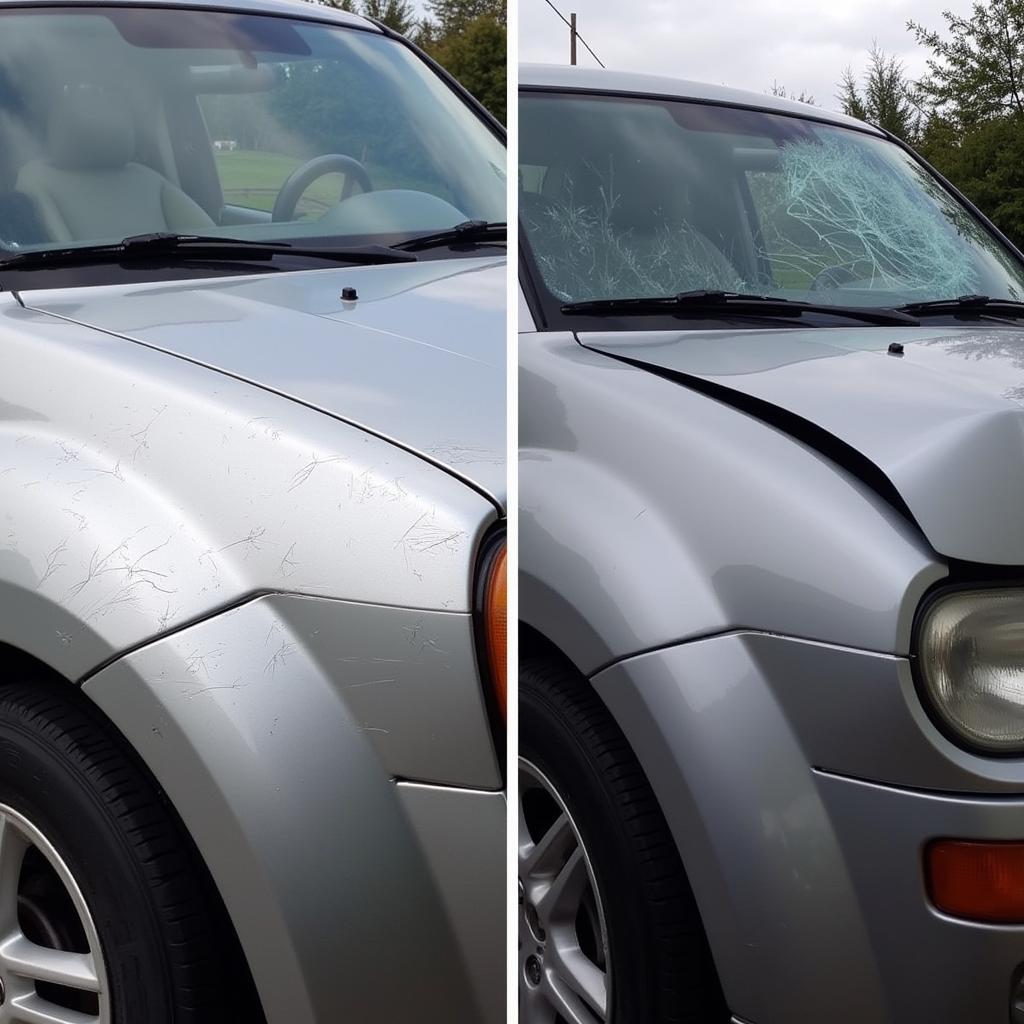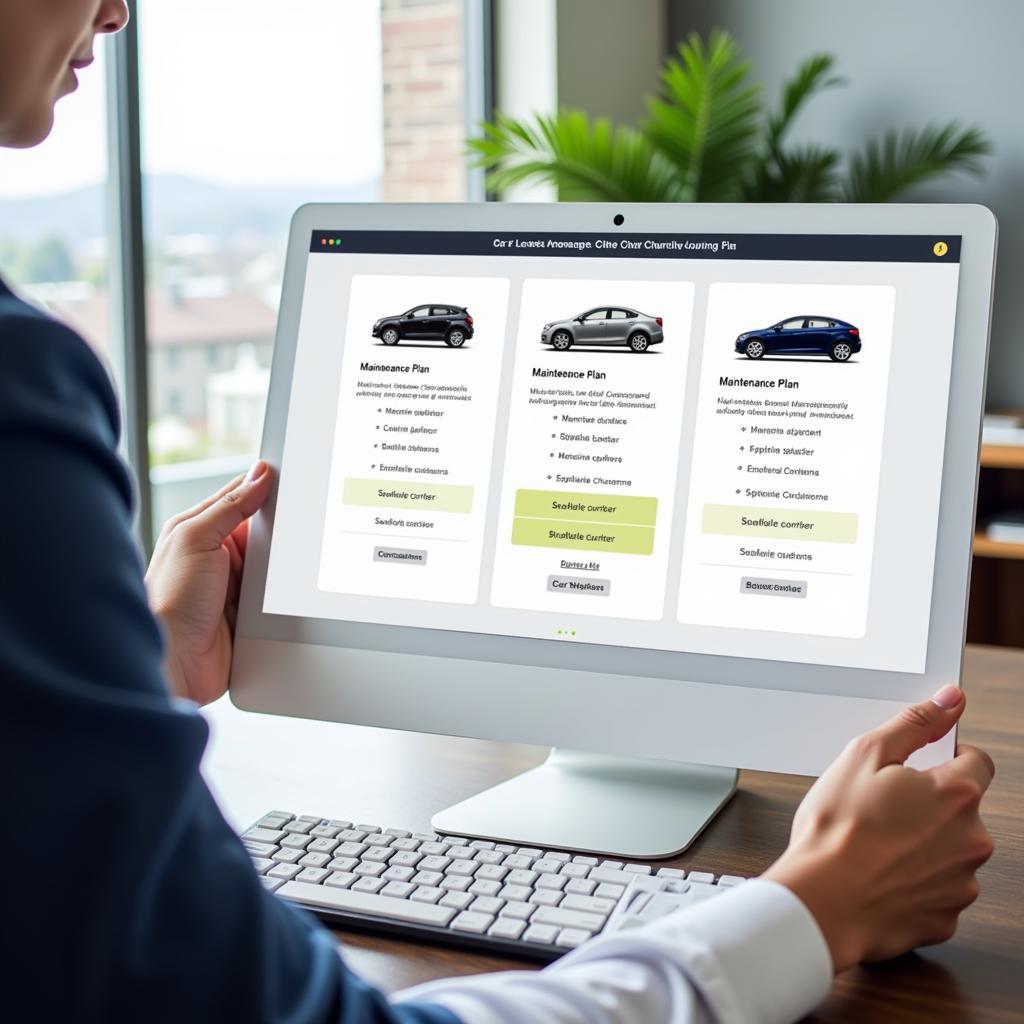Maintaining a lease car can be a bit different than owning a car outright. Understanding your responsibilities regarding Maintenance Of A Lease Car is crucial for avoiding costly penalties at the end of your lease term. This guide will provide you with everything you need to know about lease car maintenance, from routine checkups to unexpected repairs.
Understanding Your Lease Agreement
The first step in understanding your maintenance responsibilities is to thoroughly review your lease agreement. It outlines everything you need to know, including required maintenance tasks, wear-and-tear guidelines, and potential penalties. Some leases include maintenance as part of the agreement, while others place the responsibility solely on the lessee. Look for clauses specifying the type of maintenance covered (e.g., oil changes, tire rotations), the authorized service centers, and the documentation required for reimbursement.
Don’t assume all lease agreements are the same; understanding the specifics of your contract is vital. This knowledge will empower you to make informed decisions and avoid unexpected expenses.
Routine Maintenance: Keeping Your Lease Car in Top Shape
Routine maintenance is crucial for preserving the value and performance of your lease car. Even if your lease doesn’t explicitly require it, adhering to a regular maintenance schedule can prevent bigger issues down the line. This includes regular oil changes, tire rotations, brake inspections, and fluid top-offs.
What constitutes “routine” can vary based on the make and model of your car, as well as your driving habits. Consult your owner’s manual for specific recommendations and create a maintenance schedule accordingly. Staying on top of these routine tasks can significantly reduce the risk of costly repairs and potential lease-end charges.
Dealing with Unexpected Repairs: What to Do When Things Go Wrong
While routine maintenance can prevent many issues, unexpected repairs are sometimes unavoidable. If your leased car requires repairs, notify your leasing company immediately. They may have specific procedures to follow, such as using an authorized repair shop or obtaining pre-authorization for the repairs.
car lease scheduled maintenance
Your lease agreement likely outlines the process for handling repairs. Familiarize yourself with these procedures to ensure a smooth and hassle-free repair process. Ignoring or delaying repairs can lead to more serious problems and potentially violate your lease terms.
Wear and Tear vs. Damage: Knowing the Difference
Understanding the distinction between normal wear and tear and actual damage is critical when leasing a car. Normal wear and tear encompasses minor scratches, dings, or interior wear that occurs with regular use. Damage, on the other hand, refers to more significant issues like dents, cracked windshields, or torn upholstery.
 Wear and Tear vs. Damage on a Lease Car
Wear and Tear vs. Damage on a Lease Car
Your lease agreement should specify acceptable levels of wear and tear. Documenting any pre-existing damage before you take possession of the vehicle is also essential. This can help prevent disputes at the end of your lease term.
“Keeping meticulous records of all maintenance performed is crucial. This documentation serves as proof of your diligence and can be invaluable in avoiding unnecessary charges,” says automotive expert, John Smith, ASE Certified Master Technician.
Maintaining Tires and Brakes: Key Components for Safety and Lease Compliance
Tires and brakes are critical safety components that require regular attention. Your lease agreement may have specific requirements for tire tread depth and brake pad thickness. Ensuring these components are within acceptable limits is not only crucial for safety but also for complying with your lease terms.
Neglecting tire and brake maintenance can lead to significant safety risks and costly repairs. Regularly checking tire pressure and tread depth, as well as getting your brakes inspected, can prevent these issues.
business car lease with maintenance
Is Maintenance Included in My Lease? Understanding Different Lease Options
Not all leases are created equal. Some lease agreements include a maintenance package, covering routine maintenance tasks like oil changes and tire rotations. Others may offer a maintenance plan as an optional add-on. Understanding the terms of your lease is crucial for knowing what’s covered and what’s not.
do all car leases include maintenance
“Opting for a lease with a maintenance package can simplify the process and provide peace of mind, especially for those who prefer a hassle-free driving experience,” advises Jane Doe, a seasoned automotive consultant.
Choosing the Right Maintenance Plan: Finding the Best Fit for Your Lease
If your lease doesn’t include maintenance, you may consider purchasing a separate maintenance plan. These plans can cover a range of services, from routine maintenance to more extensive repairs. Evaluate your driving habits, the make and model of your car, and your budget to determine the best plan for your needs.
 Choosing a Car Lease Maintenance Plan
Choosing a Car Lease Maintenance Plan
Conclusion
Proper maintenance of a lease car is essential for a smooth and cost-effective leasing experience. Understanding your lease agreement, adhering to a routine maintenance schedule, and addressing repairs promptly can help you avoid unexpected charges and ensure a positive lease-end experience. Contact AutoTipPro at +1 (641) 206-8880 or visit our office at 500 N St Mary’s St, San Antonio, TX 78205, United States for expert advice and assistance with your lease car maintenance needs.




Leave a Reply